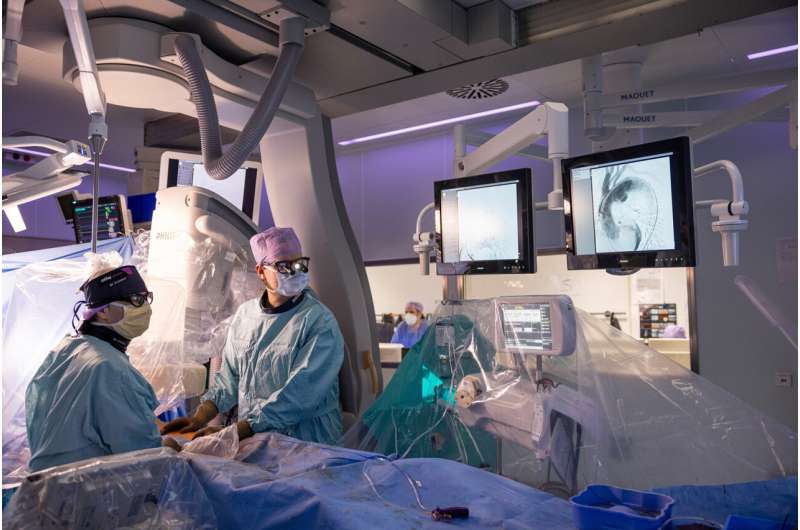This article has been reviewed according to Science X's editorial process and policies. Editors have highlighted the following attributes while ensuring the content's credibility:
fact-checked
peer-reviewed publication
proofread
The aorta categorized as an independent organ for the first time

The aorta, also known as the main artery, is now categorized as an independent human organ. This has now been established in the guidelines for aortic surgical treatments of the European Association for Cardiothoracic Surgery (EACTS) and the US Society of Thoracic Surgeons (STS).
The guidelines were published simultaneously on 26 February 2024 in the European Journal of Cardio-Thoracic Surgery and The Annals of Thoracic Surgery. They were developed by international experts under the leadership of Prof Dr. Martin Czerny from the Medical Center—University of Freiburg. The new classification of the aorta as an organ has far-reaching consequences, from the division of medical specialties to specific patient care.
Heart, lungs, brain, aorta: Elevated to the highest league as an organ
"Recognizing the aorta as an organ puts it on a par with the heart, lungs or brain. This is a big step," says Czerny, Medical Director of the Department of Cardiovascular Surgery at the University Heart Center of the Medical Center—University of Freiburg. Until now, aortic diseases have usually been treated either in cardiac surgery or in vascular surgery, depending on their type and location.
"The new guidelines clearly recommend bundling the treatment of the aorta in a separate specialty, naturally in close coordination with other specialties. We have been practicing this integrative approach at the Medical Center—University of Freiburg for a long time and I am delighted that our work is now also being recognized internationally," says Czerny.
"I am certain that this will improve the treatment of patients with aortic rupture and other serious diseases." The guidelines could also have an influence on the content of medical studies and specialist training.
Czerny has been one of the world's most cited scientists in the field of cardiovascular surgery for many years. Other doctors from the Department of Cardiovascular Surgery, the Department of Diagnostic and Interventional Radiology at the Medical Center—University of Freiburg and numerous international doctors were involved in the commission to develop the new guidelines under Czerny's co-leadership.
"The high level of expertise at the Medical Center—University of Freiburg in the field of cardiovascular medicine is a core pillar of our quality-centered, cutting-edge university medicine," says Prof. Dr. Frederik Wenz, CEO of the Medical Center—University of Freiburg. "Prof. Czerny and his team once again confirm the outstanding position of our University Heart Center Freiburg—Bad Krozingen throughout Germany," says Wenz.
The aorta has complex tasks and functions
The aorta is responsible for transporting oxygen-rich blood from the heart to the rest of the body. In recent years, it has become increasingly clear that it also plays an important role in regulating blood pressure and blood flow velocity. In addition, it is involved in the production of certain hormones and has its own layer of smooth muscle cells that help to maintain its structure and function.
The new guidelines describe the procedure for diagnosing and treating diseases of the aorta such as aortic aneurysm. An aneurysm is an abnormal bulge in the aortic wall that harbors a high risk of an acutely life-threatening rupture. If the aorta ruptures, emergency surgery is required. "These diseases require complex surgical interventions, which we can better understand, research and perform thanks to the holistic view of the aorta," says Czerny. "Very good follow-up care is also very important, as those affected often show dangerous changes in the aorta again later in life," says Czerny.
More information: Martin Czerny et al, EACTS/STS Guidelines for diagnosing and treating acute and chronic syndromes of the aortic organ, European Journal of Cardio-Thoracic Surgery (2024). DOI: 10.1093/ejcts/ezad426
Martin Czerny et al, EACTS/STS Guidelines for diagnosing and treating acute and chronic syndromes of the aortic organ, The Annals of Thoracic Surgery (2024). DOI: 10.1016/j.athoracsur.2024.01.021





















